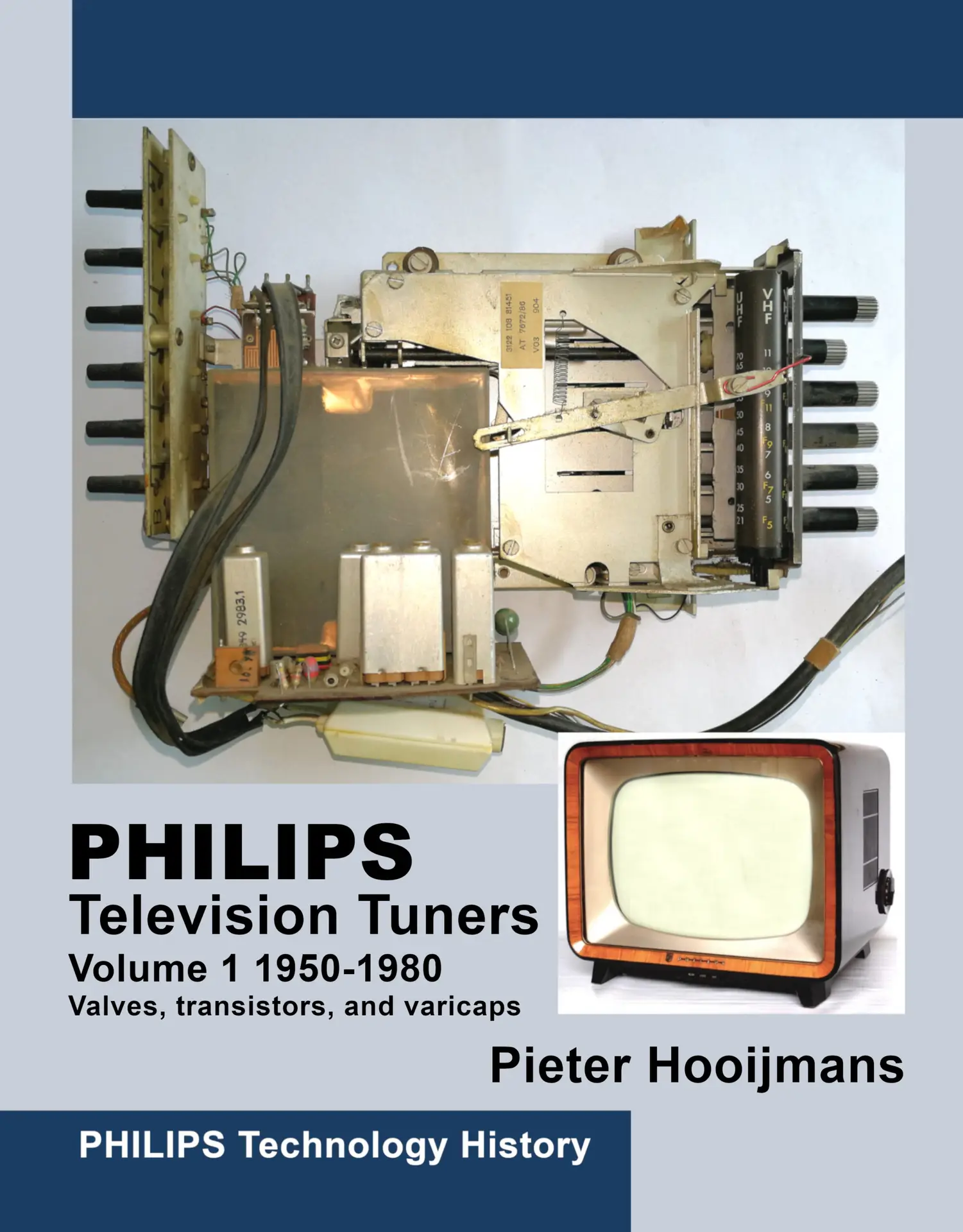genres
Philips Television Tuners Volume 1 1950-1980
€45,00
Author(s): Pieter Hooijmans
Expected on: June 2025
Language: English
Pages: 280
Size: 216 x 279 mm
Edition: hardcover
ISBN: 978-90-833590-0-7
Year: 2025
Publisher: Maximus - R&D
Design: Pieter Hooijmans
This is the first part in the Philips Technology History series. The focus is on the technologies developed within Philips that made the company a global player in consumer electronics, components, and semiconductors. The author uses the television channel selector (or tuner, the radio frequency tuning unit in all classic televisions) as a common thread to describe in detail the developments in the field of television. In addition, the underlying technologies are discussed in detail: several generations of radio tubes, the first germanium transistors, and later the silicon semiconductors. The development organizations and many factories, spread across Europe and other countries where Philips was active, are also discussed in detail.
After the picture tube, the channel selector was the television function that most influenced viewing behavior. Although today we are used to changing channels with a single press of the remote control, this was completely different in the 1950s, with heavy mechanical drum selectors. From the 1960s onwards, the channel selector was the core around which new concepts of TV control were introduced, first mechanical, then push buttons and touch keys, and via the ultrasonic finally to the infrared remote control as we know it today. The years from 1950 to 1980 were the time in which Philips Television, Tuners, and Elcoma grew to become leading global players. All these developments are described extensively and in great technical detail, supplemented with unique memories of Tuner colleagues which go back to the 1960s.
Pieter Hooijmans (MSc PhD) is an electronic engineer in high-frequency technology who worked for 29 years at Philips and NXP as a researcher, development manager, and ultimately as vice president of strategy and technology. For most of his career, which spanned the Eindhoven Physics Laboratory, Germany, Singapore, and NXP headquarters, he has been closely involved in technology and product development in consumer electronics and semiconductors. With history as one of his many passions, it was only logical that he devoted himself to documenting the many technologies and products to which he often contributed or was closely involved.
Additional information
| Weight | 1500 g |
|---|
